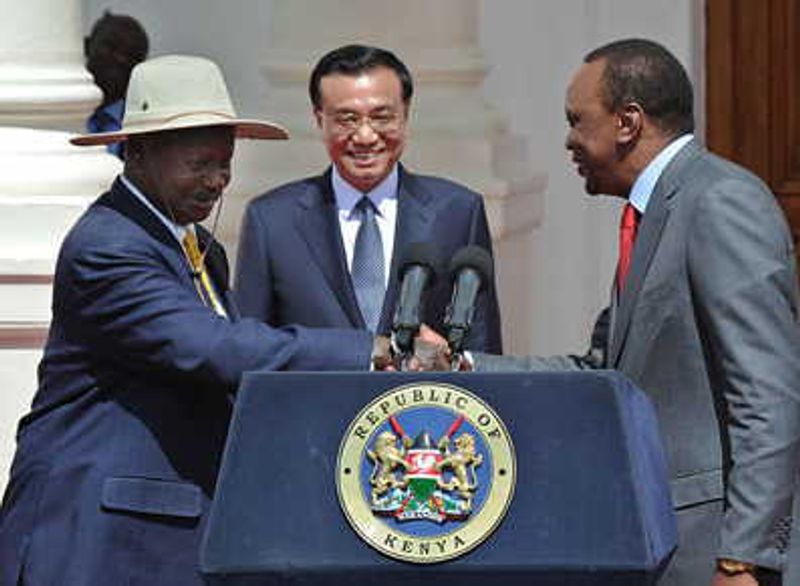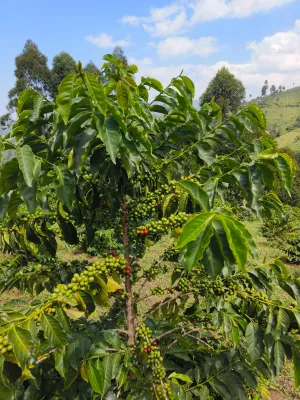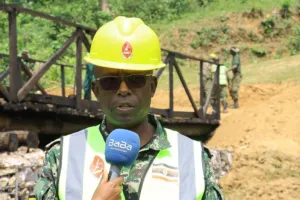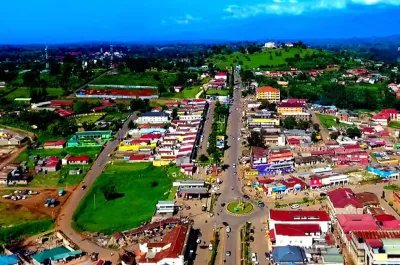

President Museveni witnessed the agreement last year between Kenya and China for the funding of the Momba-Nairobi standard gauge railway. Work is expected to be completed in 2018
Premier Li Keqiang said his government will continue to emphasize training and experience sharing with Uganda.
President Museveni thanked the Chinese government for financing the construction of Karuma and Isimba hydro power dams.
The proposed standard gauge railway project is a highly controversial subject in Uganda and one that has been a subject of possible corruption.
The standard gauge railway project, which is part of the greater northern corridor infrastructure project that is expected to connect Kenya’s standard gauge railway to Uganda, Rwanda and South Sudan.
But the cost as well as the choice of the company to undertake the construction of Uganda’s arm of the railway have been highly disputed and politicized.
Over the past few months, two Chinese companies; China Civil Engineering and Construction Corporation (CCECC) and China Harbour Engineering Company (CHEC) have jostled for the contract, although President Museveni directed Byabagambi to award it to CHEC.
Last year the then state minister for works John Byabagambi (now full minister for works) told Members of Parliament that the government wanted to borrow US$13 billion dollars from China Exim bank to finance the construction of the standard gauge railway.
The latest development from President Museveni’s visit to China now means that CHEC’s contract is not a done deal yet and that the cost may be altered.
Meanwhile, in May 2014, Kenya’s President Uhuru Kenyatta along with China’s Premier Keqiang were joined by three East African Presidents including President Museveni to launch Kenya’s standard gauge railway.
The Kenyan section of the railway project will cover 609.3 kilometres from the port of Mombasa to Nairobi and will cost $3.6 billion, with 90% of the funds coming from China.
The US$13 billion award to CHEC for Uganda’s section, has been questioned because of its exaggerated cost compared to Kenya’s, especially considering that the Ugandan section of the railway is drastically shorter at 218km from Kampala to Malaba, compared to Kenya’s section.
The Unit cost of building Kenya’s standard gauge railway stands at US$5.9m while a kilometre of Uganda’s standard gauge would come out at US$59m.
Given Uganda’s lack of access to the sea, the standard gauge railway is looked at as one of a priority project for Uganda in terms of reducing the cost of transporting merchandise to and from the port of Mombasa.
The Standard gauge railway is also considered as a major integration project to facilitate movement of goods and persons within the region.
The movement of goods by rail will also lessen the ware and tare on roads and by extension the cost of road repairs that are brought to bare by excessive weight of trucks.














Sunrise Admin
Leave a Comment
Your email address will not be published.